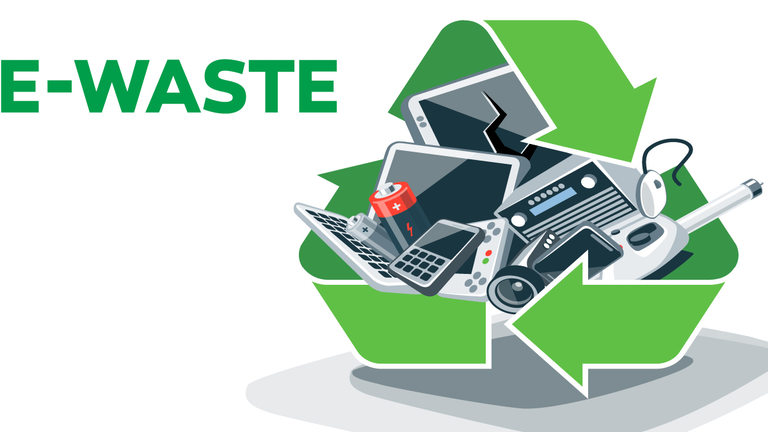The Heart Of E-Waste Management: Exploring Recycling Facilities

In today’s digital age, electronic garbage, or e-waste, has arisen as a major environmental concern worldwide. With the rapid growth of technology, electronic gadgets are quickly replaced, increasing discarded electronics. Proper e waste recycling facility is critical for reducing environmental impact and promoting sustainable resource utilization. This article delves further into e-waste recycling facilities, different recycling procedures, and asset disposition practices.
E-waste Recycling Facilities:
E-waste recycling facilities serve an important role in removing electronic gadgets from landfills and recovering valuable components for reuse. These facilities are outfitted with innovative machinery and skilled workers to handle a wide range of electrical gadgets, from smartphones and laptops to larger appliances such as refrigerators and washing machines. In addition to recycling, many facilities offer services such as data destruction and secure disposal to ensure the protection of sensitive information.
Features and Infrastructure of E-Waste Recycling Facilities:
- Segregation and Sorting Systems: These facilities feature advanced segregation and sorting systems that categorize electronic waste based on type, material composition, and recyclability. Automated sorting technologies, such as optical sensors and magnetic separators, streamline the process and ensure accurate material separation.
- Secure Data Destruction Facilities: E-waste recycling facilities prioritize data security and feature dedicated areas for secure data destruction. Specialized equipment, such as data shredders and degaussers, are used to permanently erase sensitive information stored on electronic devices, safeguarding against data breaches.
- Hazardous Waste Management Infrastructure: Due to the presence of hazardous materials in electronic waste, these facilities have specialized infrastructure for the safe handling and disposal of toxic substances. This includes containment systems, ventilation controls, and chemical treatment facilities to mitigate environmental and health risks associated with hazardous waste.
- Material Recovery Units: E-waste recycling facilities are equipped with material recovery units designed to extract valuable resources from electronic waste. These units utilize mechanical and chemical processes to recover metals (such as copper, aluminum, and gold), plastics, glass, and other recyclable materials from electronic components.
- Quality Control and Testing Laboratories: Quality control and testing laboratories are integral to e-waste recycling facilities, ensuring the purity and integrity of recovered materials. These laboratories conduct comprehensive testing and analysis to verify the quality of recycled materials and comply with industry standards and regulatory requirements.
- Staff Training and Safety Measures: E-waste recycling facilities prioritize staff training and safety measures to ensure a safe working environment for employees. Comprehensive training programs cover proper handling of electronic waste, use of personal protective equipment, and emergency response procedures to mitigate workplace hazards.
- Waste Management and Logistics Infrastructure: These facilities have efficient waste management and logistics infrastructure to handle incoming electronic waste and outgoing recycled materials. This includes designated storage areas, transportation fleets, and logistics networks to manage the flow of materials in and out of the facility.
E waste recycling methods:
- Collection and Sorting: The initial step in e-waste recycling is gathering electronic devices from diverse sources, such as homes, businesses, and government agencies. These devices are then classified according to their type, condition, and material composition to assist efficient recycling procedures. Proper labeling and documenting are essential during this step to track the origin and characteristics of the collected e-waste.
- Dismantle and segregate: Once sorted, electrical equipment is dismantled into smaller components. Batteries, circuit boards, wires, and other components are removed to separate materials like metals, polymers, and glass. Skilled specialists utilize specialized tools and equipment to disassemble devices safely and efficiently, reducing the risk of harm and increasing resource recovery.
- Material Recovery: Following segregation, recyclable materials are removed from electronic components using mechanical and chemical methods. Shredding, magnetic separation, and leaching are procedures used to recover metals such as copper, aluminum, and gold. Plastics are melted and molded into new goods, while glass is broken and reused for a variety of uses.
- Hazardous Waste Management: E-waste recycling necessitates careful management of hazardous materials such as lead, mercury, and cadmium. Specialized treatments, such as encapsulation and heat treatment, safely neutralize these compounds, reducing environmental contamination and health concerns while maintaining regulatory compliance.
- Thermal treatment: it is the process of recovering energy from non-recyclable e-waste components by heating them to high temperatures in specialized incinerators or pyrolysis reactors. Organic materials are transformed into gases, liquids, and solid leftovers, and the resulting heat is used to generate electricity or heat. However, tight emission controls and pollution monitoring are required to reduce environmental damage.
Asset Disposition Practices:
Effective asset disposition practices are essential for managing obsolete or surplus electronic assets responsibly. Here are five key practices adopted by organizations:
- Reuse and Refurbishment: Instead of throwing away outdated devices, businesses can restore and repurpose them internally or donate them to charitable groups. Refurbishment increases the lifespan of electronic devices, lowering the need for new items and reducing e-waste generation. This method not only saves vital resources but also allows marginalized populations to gain access to low-cost technology solutions.
- Recycling Programs: Organizations frequently collaborate with accredited e-waste recycling providers to dispose of outmoded gadgets ethically. These programs make it easier to collect and recycle electronic equipment by regulatory standards, ensuring that e-waste is disposed of responsibly. Organizations that implement recycling programs help to create a closed-loop system in which materials are recycled and reused, eliminating raw material extraction and environmental deterioration.
- Data Security Measures: Before asset disposition, firms emphasize data security by employing stringent data wiping or destruction procedures. This entails deleting sensitive information from electronic devices to prevent illegal access and protect personal data. Organizations reduce the risk of data breaches and protect stakeholders’ privacy by using approved data deletion processes and following industry standards.
- Compliance with Regulations: Asset disposition processes must adhere to regulations such as the E-Waste (Management) Rules, 2016, which require proper disposal and recycling of electronics. Organizations must ensure compliance to avoid penalties and contribute to long-term waste management efforts. Compliance with regulations promotes transparency and accountability in asset disposition processes, fostering trust among stakeholders and regulatory bodies.
- Environmental Responsibility: Organizations should prioritize environmental responsibility in asset disposition procedures by selecting recycling options that reduce environmental effects while increasing resource recovery. Organizations can reduce their environmental impact and foster a circular economy by working with reputable recycling facilities and following best practices. Furthermore, employing energy-efficient operations and packaging reduction initiatives helps to improve environmental sustainability efforts.
E-waste recycling facilities, recycling technologies, and asset disposition Noida policies are all critical components of sustainable e-waste management. Organizations can reduce the environmental impact of electronic waste by embracing appropriate recycling procedures and implementing effective asset disposition strategies. We can overcome the e-waste crisis and create a more sustainable world by working together and committing to environmental care.




